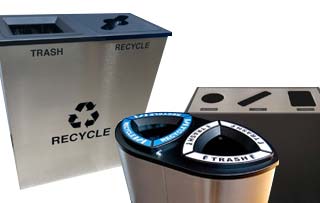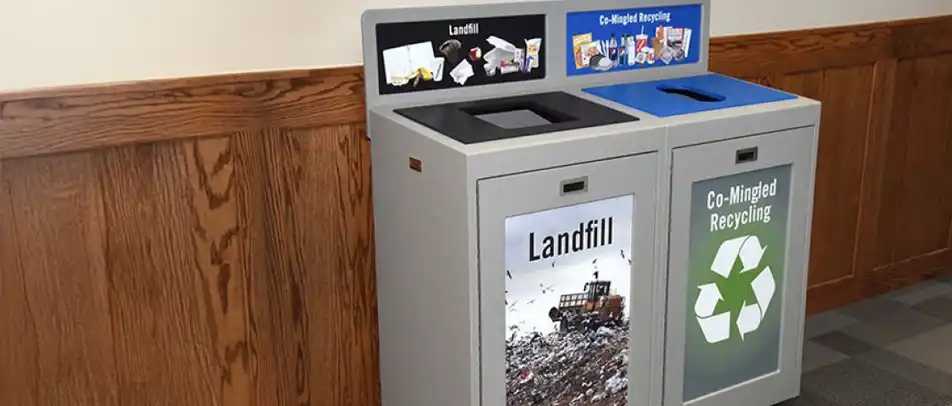
From municipal offices to technology manufacturers, sustainable purchasing and procurement is a growing priority for organizations of all shapes and sizes. A vast majority of businesses (81%), according to a recent EcoVadis study, are now committed to sustainable procurement, a number that has shot up in recent years.
In addition to consumer demand and corporate responsibility, organizations are seeing substantial economic value in adopting sustainable practices. These practices include building brand reputation, improving employee relations, mitigating risk, and reducing operational costs. All make for a competitive advantage and a powerful impact on the bottom line.
With the innovation flowing, it’s an opportune and exciting time to be part of this quickly evolving field. Here are five inspiring trends that are driving sustainable purchasing and procurement right now.
1) A strong stand against single-use plastic
Plastic waste is on everyone’s radar and prime concern for public, private, and government sustainability managers. Leaders in this area are making significant commitments and going to great lengths to cut plastic use or implement new ways to recycle and reuse. Governments and institutions at all levels are imposing single-use plastic bans and introducing policies to reduce plastic waste and purchase sustainable plastic products.
In the food services sectors, many, including large chains, are working to support the movement as well by swapping disposable plastic packaging for sustainable sources. Consumer goods producers and retailers are also heeding the call to achieve 100 percent recyclable packaging, including large chains like Walmart, Aldi, and manufacturers like Nike.
2) The campaign for zero-waste surges
Purchasers focused on the bigger sustainability picture are already well on the way towards zero waste targets, and this trend promises to continue. Large cities like Singapore have been announcing zero-waste programs and emphasizing their commitment. Small businesses at the local level, including grocers and restaurants, are leading a ground-up movement to cut waste out their business models and provide waste-free options for their communities. And while action from big business has been slower, many large brands and industry groups are beginning to take up the zero-waste challenge.
3) Connecting the circular economy dots
Putting reduction and reuse into a functional framework, the circular economy is becoming a strategic top of mind for many purchasers and procurement organizations. It’s a rethink on production and consumption cycles, with a sharp focus on reduction, reuse, and recycling. For purchasers, it means looking at ways to use as little as possible from the start. Thus, using more biodegradable materials and then ensuring all other resources can be fully recycled—and putting this commitment into clearly defined terms and operations. Major cities, like Toronto, and big businesses, like Ikea and Unilever, are picking up on this and working to build circular economy principles into their procurement policies and programs.
4) The rise of repurposing and reuse platforms
Disposing of outdated assets or finding suitable homes for used goods can be a struggle for many organizations. Rising to help solve the challenge is a range of new platforms and programs designed to make it easier for operations and purchasing to dispose of and redistribute used goods.
On the smaller end of the scale, sustainable and social enterprises have emerged in many city centers that provided outlets for businesses to donate used furniture and office equipment. On a larger scale, many companies, especially in manufacturing, are looking to material exchanges and marketplaces to buy and sell surplus or scrap materials. These platforms can help reduce waste and building more sustainable supply chains while lowering costs. Governments and public institutions are also readily adopting sharing and redistribution networks, like warpit, to pool resources between related organizations, reducing waste and costs.
5) An even tighter focus on supply-chain emissions
As climate issues take center stage, companies are gearing up their efforts to reduce emissions across their entire operations and supply chains. According to recent reports, success is on the way. Sustainability managers are looking at a variety of means to move towards carbon-neutral and emission-free. The big ideas include electric vehicle fleets, car sharing, but also reducing the use of fossil fuel-dependent virgin plastics in manufacturing and sourcing energy from only renewable sources.
Sustainable purchasing is a powerful way to reduce environmental impact throughout an organization. As more and more businesses are discovering, there are plenty of additional benefits, including positive influence on the bottom line. Stay tuned for additional thoughts and insights to help grow and support your sustainability efforts.
























































































 Three Ways to Engage Teams and Clients to Maximize Your Recycling Program Engagement
Three Ways to Engage Teams and Clients to Maximize Your Recycling Program Engagement  How to Integrate Accessibility Into Your Sustainability Planning
How to Integrate Accessibility Into Your Sustainability Planning  Why Park Benches Can Promote Workplace Well-Being
Why Park Benches Can Promote Workplace Well-Being 
